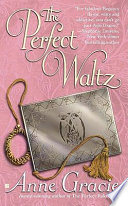
Figures and lessons are taken from The Art of Tying the Cravat
Demonstrated in Sixteen Lessons, Including Thirty-two Different Styles, Forming a Pocket Manual … Preceded by a History of the Cravat, from Its Origin to the Present Time, and Remarks on Its Influence on Society in General (1829).



The directions continue: ”
In the first place, the Cravat for this tie must be of ample size, and properly starched, ironed, and folded (as shewn plate B. fig. 6); whether it be plain or coloured is of little consequence; but a rather stout one should be preferred, as it will offer more facilities to the daring fingers of the beginner who attempts to accomplish this chef-d’œuvre.
It will then be necessary to meditate deeply and seriously on the five following directions.
I. When you have decided on the Cravat, it must be placed on the neck, and the ends left hanging (as shewn plate B, fig. 7, first time).
II. You must take the point K, pass it on the inside of the point Z, and raise it (same plate, fig. 8, second time).
III. You lower the point K on the tie, now half formed O (same plate, fig. 9, third time).
IV. Then, without leaving the point K, you bend it inside and draw it between the point Z,[33] which you repass to the left, Y; in the tie now formed, Y, O, you thus accomplish the formation of the destined knot.
V. and last. After having tightened the knot, and flattened it with the thumb and fore-finger, or more properly with the iron, mentioned in the preceding lesson (see plate A, fig. 5); you lower the points, K, Z, cross them, and place a pin at the point of junction H, and at once solve the problem of the Nœud Gordien.
He who is perfectly conversant with the theory and practice of this tie, may truly boast that he possesses the key to all the others, which are, in fact, derived from this alone. A Cravat which has been once worn in this way, can only be used afterwards en negligé, as it will be so much tumbled by this intricate arrangement.
The slightest error in the first fold of this tie will render all succeeding efforts, with the same handkerchief, entirely useless—we have said it.
We would, therefore, seriously advise any one who really desires to be initiated in the mysteries of this delightful science, to make his first essay[34] on a moderate sized block. We can confidently assure him, that with moderate perseverance, he will soon be enabled to pursue his studies with pleasure and advantage—on himself.
(A careful examination of the figures referred to in this lesson is strongly recommended).”
We will continue, over the next several months, to explore Men’s Regency Fashion..so stay tuned for more on cravats, breeches and great coats.
Enjoy our content? Consider buying us a coffee!











